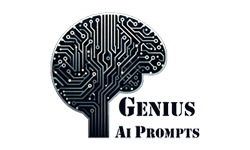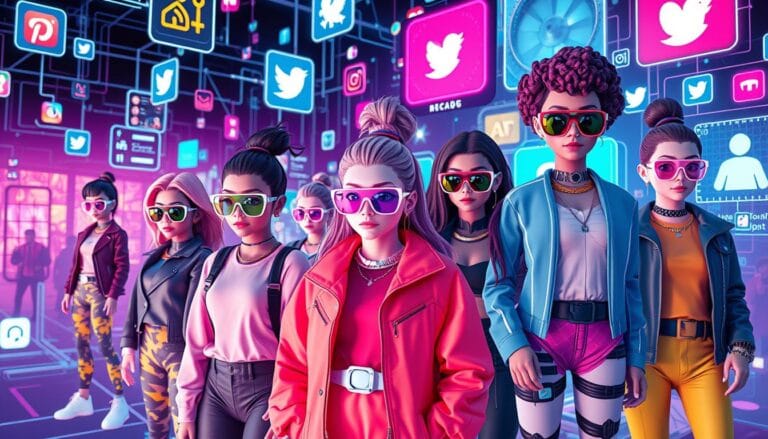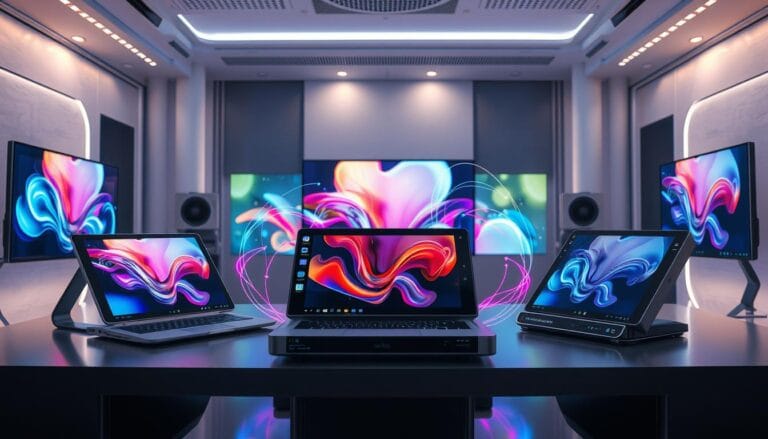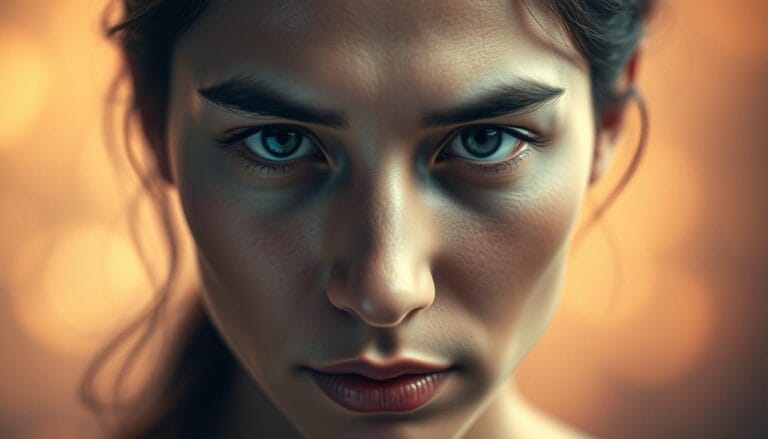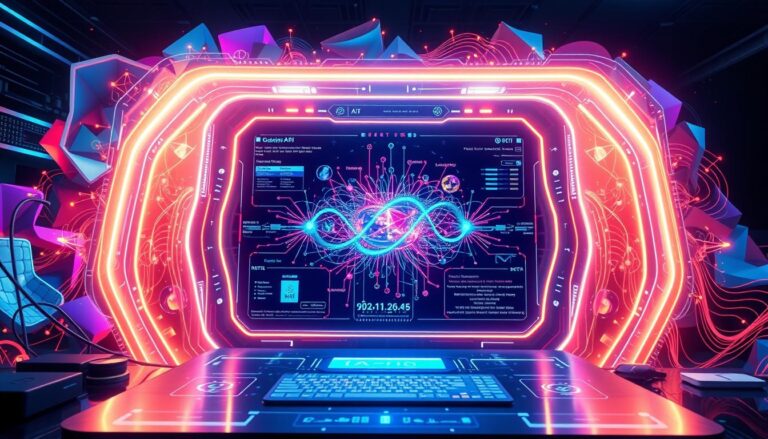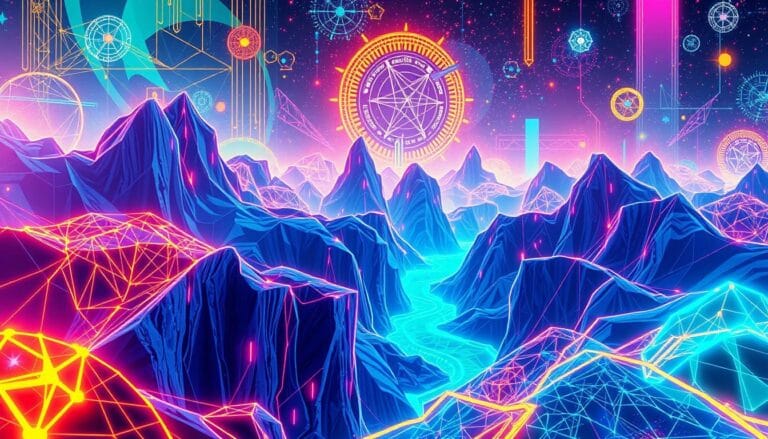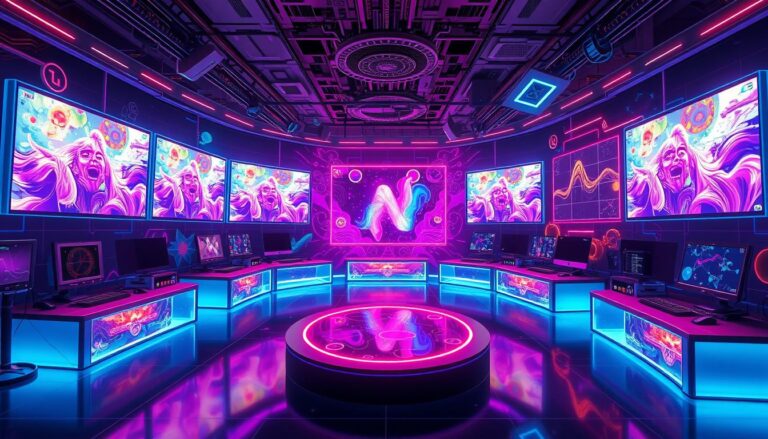Make an AI Image More Real: 10 genius prompts
I’ve always been amazed by AI-generated art. Tools like Stable Diffusion and Midjourney have changed the game. But sometimes, the images can feel too fake, lacking the realness we want.
Thank you for reading this post, don't forget to subscribe!So, I’m excited to share 10 genius prompts to make an AI images more real l like masterpieces. With a bit of creativity, you can make your AI art feel more alive and authentic.
Table of Contents
Key Takeaways
- Discover 10 expert prompts to enhance the realism of AI-generated artwork
- Learn prompt engineering techniques to unlock the true potential of AI art creation
- Explore creative constraints and role-playing scenarios to push the boundaries of AI image generation
- Understand the fundamentals of AI image generation and common challenges in achieving realism
- Discover essential tools and platforms for AI image enhancement and post-processing
Understanding AI Image Generation Fundamentals
Making stunning AI images is a complex task. It uses advanced algorithms and learning models. At the heart of this tech are neural networks. They help spot patterns and details in images, from simple to complex.
Generative Adversarial Networks (GANs) are key in creating AI art. They have a generator and a discriminator. Together, they make images better over time. This teamwork opens up new creative paths for many, from artists to game makers.
Basic Principles of AI Art Creation
AI image making starts with huge datasets of images. These are fed into learning algorithms. The algorithms learn to copy the visual patterns and styles they see.
Common Challenges in AI Image Realism
AI image making has made big strides, but it still faces hurdles. Gathering lots of data, training networks, and ethical worries are some. Issues like wrong anatomy, lighting, and textures also affect realism.
Current Limitations and Solutions
One big challenge is controlling image detail and quality. To tackle this, new methods have been developed. These include better prompts, custom models, and advanced editing techniques. They aim to make AI images look more real and detailed.
| AI Image Generator | Key Features | Limitations |
|---|---|---|
| DALL-E 2 | High-quality image generation, broad capabilities | Requires registration, limited daily usage |
| Midjourney | Collaborative community, diverse image styles | Discord-based interaction, learning curve |
| ArtBreeder | Experimental image manipulation, blend styles | Limited output resolution, specific use case |
The future of AI image making looks bright. With ongoing research, we can expect even better images. These will be used in many fields, from marketing to entertainment.
Essential Tools and Platforms for AI Image Enhancement
There are many tools and platforms to enhance AI images. Diffusitron and Stable Diffusion are top choices. Newcomers like Midjourney and Leonardo AI also offer great options.
These platforms have many features. You can generate images from text, transform images, and even use negative prompts. They also upscale images, fix faces, and let you customize images for reproducibility.
Diffusitron is great for fine-tuning AI images. It optimizes colors and lighting for more realism. Stable Diffusion is known for its high resolution and detail, making your images clear and detailed.
Midjourney stands out for its creative and imaginative images. It may not always be photorealistic but its unique approach to prompts can create amazing images.
Exploring different tools and platforms is key to enhancing AI images. By mastering these essential tools, you can create stunning and realistic AI images that reflect your artistic vision.

“The future of AI-generated art lies in the seamless integration of powerful tools and platforms that can truly elevate the realism and quality of our creations.”
Make an AI Image More Real: Core Techniques
To make AI images look real, you need to learn a few key techniques. First, prompt engineering is very important. You must write detailed prompts that tell the AI about camera angles, lenses, and lighting. Try different ways of writing to see how it changes the image.
Then, focus on resolution and detail control. Use tools like upscaling and face-fixing to add depth and clarity. These tools can make your AI images look more real and detailed.
Lastly, color and lighting optimization are key. Use natural light and follow scene composition rules to make your images look natural. Learning these skills will help you steps to improve realism in ai images and how do i make ai images look like real photos?
“Prompt engineering is the key to unlocking the full potential of AI image generation.”
By using these techniques together, you can make your AI images look incredibly real. Keep trying new things and improving your skills to get the best results.
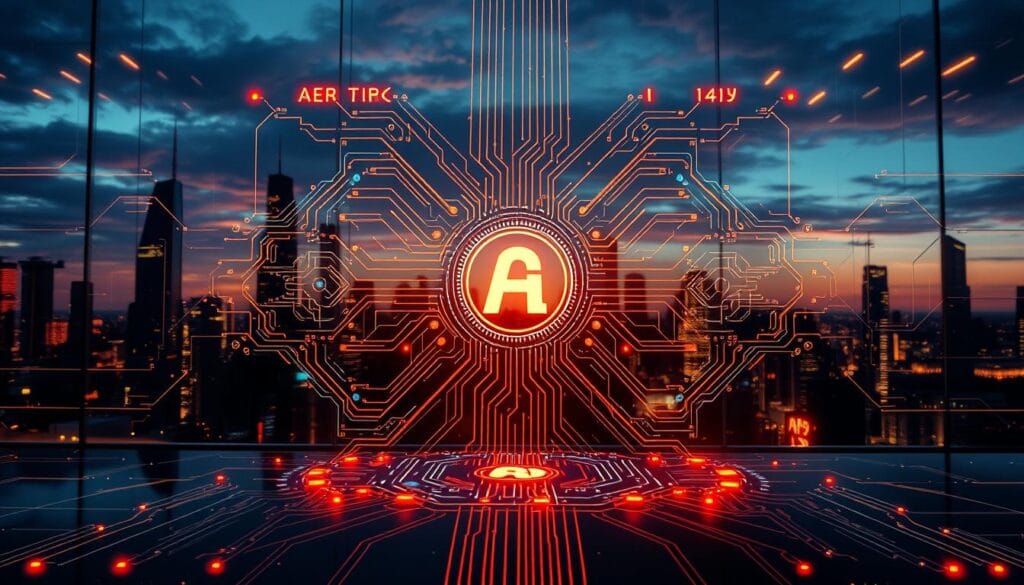
Advanced Prompt Engineering Strategies
Unlock the true potential of advanced techniques for making ai images real by mastering prompt engineering. Go beyond basic prompts. Explore strategies that can help can ai-generated images be made photorealistic? with remarkable precision and detail.
Role-playing scenarios are a powerful approach. Imagine explaining blockchain technology through a librarian’s lens or a pirate’s words. This creative shift inspires AI models to create dynamic, lifelike images that grab your attention.
Contrasting viewpoints are also effective. Ask the AI to show a scene from different angles, like a businessman’s office from an executive and a janitor’s view. This method challenges the AI to consider various perspectives, improving the image quality.
Analogies and metaphors are great tools too. Comparing a futuristic city to a lush jungle or a tech device to a household item sparks the AI’s creativity. This results in visually striking, can ai-generated images be made photorealistic? images.
By using these advanced strategies, you can create more creative and realistic AI images. You’ll push the limits of what’s possible and wow your audience with immersive visuals.
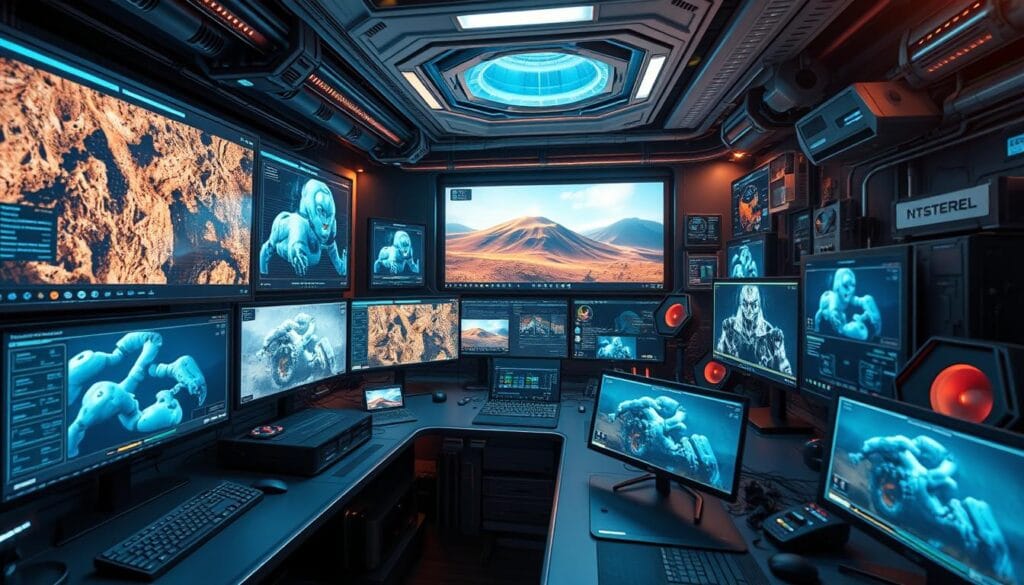
Lighting and Composition Techniques for Realistic Results
To get realistic AI images, you need to know about lighting and composition. Simulating natural light and understanding how it interacts with surfaces adds depth and dimension. Also, choosing the right camera angle and scene composition can make your AI art look more real.
Natural Light Simulation
Getting natural light right is key to realistic images. Think about the light’s angle, intensity, and color. For example, “soft morning light filtering through lace curtains” or “warm afternoon sunlight casting long shadows” can make your images look more real.
Camera Angle and Perspective Control
The camera’s position affects the image’s depth and scale. Try different angles, from low to bird’s-eye views, to find the best shot. Also, focus on vanishing points and object sizes to create a three-dimensional effect.
Scene Composition Guidelines
Good scene composition makes AI images look more real. Think about where to place the subject, balance, and leading lines. Using familiar objects or settings helps viewers connect with the scene.
Mastering lighting, camera control, and composition can take your AI images to the next level. Try new prompts, explore features, and keep improving to make stunning, lifelike art.
Texture and Detail Enhancement Methods
Take your AI-generated images to the next level with advanced texture and detail techniques. These include AI image denoising, AI image sharpening, and AI image super-resolution. They can make your images look incredibly real and detailed.
The AI Style Transfer feature is a game-changer. It lets you change textures and enhance visuals easily. This tool keeps your images and creative work private and secure. It’s perfect for artists, designers, and marketers who want to add amazing textures and details to their work.
For the best results, start with high-quality source images. This avoids pixelation and makes texture changes look seamless and stunning. The transfer process is quick, often taking just seconds. This lets you see and tweak your work right away.
| Feature | Benefit |
|---|---|
| AI image denoising | Reduces unwanted noise and grain, resulting in cleaner, more polished visuals. |
| AI image sharpening | Enhances edge details and fine textures, adding crisp definition to your images. |
| AI image super-resolution | Increases the resolution and clarity of your images, allowing for larger print sizes or more detailed digital displays. |
Unlock the full potential of your AI-generated images with these techniques. Improve your visuals, explore new creative paths, and wow your audience with the stunning realism of your work.
Professional Post-Processing Workflows
To make AI images look professional, post-processing is key. It includes steps like upscaling image resolution, improving details, and adding final touches. These steps help make images look real and appealing.
Image Upscaling Techniques
Upscaling AI image resolution is a critical step. It makes images sharper and clearer. Tools like Topaz Labs’ AI Gigapixel and Luminar’s AI Enhance can do this well without losing quality.
Detail Refinement Steps
After upscaling, refining details comes next. This means fixing textures, edges, and small flaws. Pixlr’s Batch Edit and Aftershoot’s AI editing can help automate these tasks, improving image quality.
Final Touch-ups and Adjustments
The last step is making final adjustments. This includes tweaking colors, lighting, and overall look. AI tools like Luminar and Aftershoot make this easy, helping professionals upscale ai image resolution and enhance ai image quality quickly.
| Tool | Key Features | Pricing |
|---|---|---|
| Aftershoot | AI-driven culling and editing, pre-built AI styles | $10/month billed annually |
| Luminar | Sky replacement, portrait enhancement, structure adjustment | $79 one-time payment |
| Topaz Labs | AI Sharpen, AI Gigapixel for specific editing needs | One-time purchase options |
| Pixlr | Batch Edit, smart resizing, product image automation | Free and paid plans available |
Using advanced post-processing and AI tools, professionals can make AI images look like real photos. This ensures their work meets the highest visual standards.
Custom Models and LoRAs for Enhanced Realism
Unlock your creative potential with custom models and LoRAs. Fine-tune AI image generation to specific styles or subjects. This way, you can get unique and highly realistic results that meet your needs and preferences.
Explore platforms like Replicate and Hugging Face offered by FLUX LoRA. They open up a world of possibilities for you.
Customizing FLUX LoRA models lets you align your image outputs with your artistic vision. Whether it’s lifelike portraits, captivating pet photographs, or AI influencer creations, you can achieve it. Learn advanced techniques like image-to-image generation, inpainting, and turning your creations into dynamic videos with platforms like Kling and Runway Gen.
Enhance your FLUX AI experience by fine-tuning the guidance settings. Find the perfect balance between realism and creative expression. Use LoRA to fine-tune large language models without retraining the entire model. This unlocks a world of possibilities.
Experiment with diverse datasets and prompt weights to fully harness your custom LoRAs’ capabilities. Don’t forget to share your creations with the community. This way, you get feedback and can keep improving.
